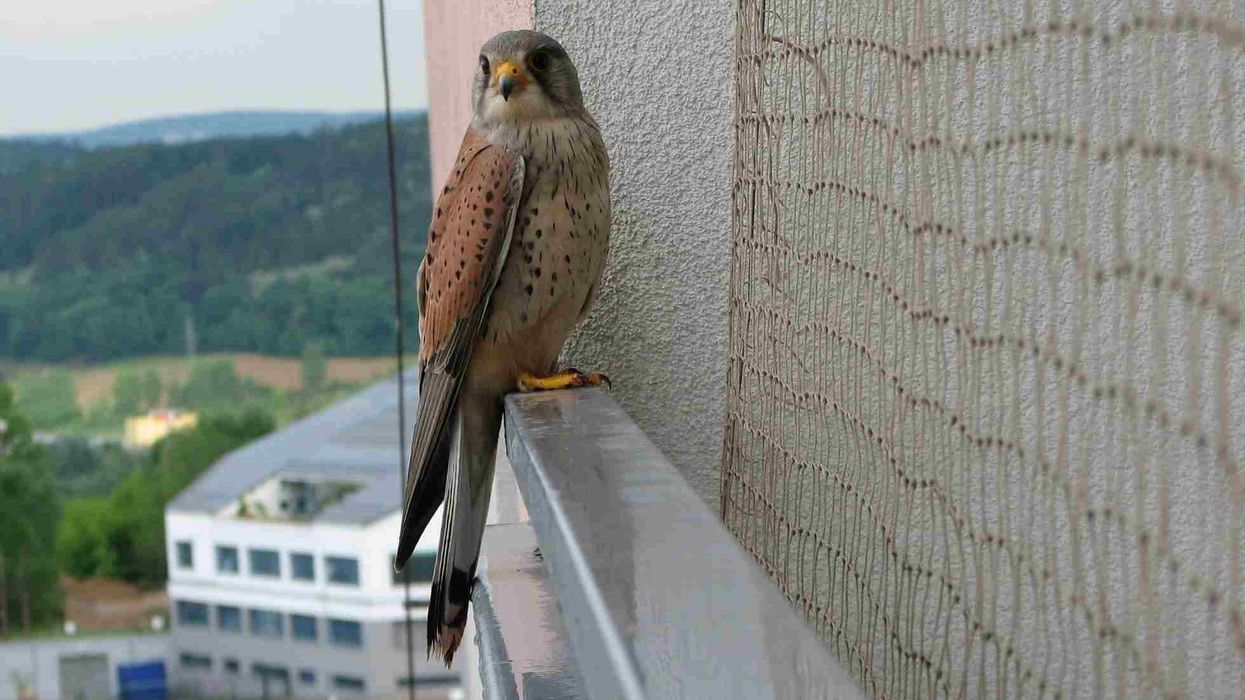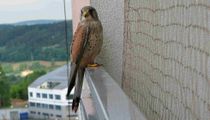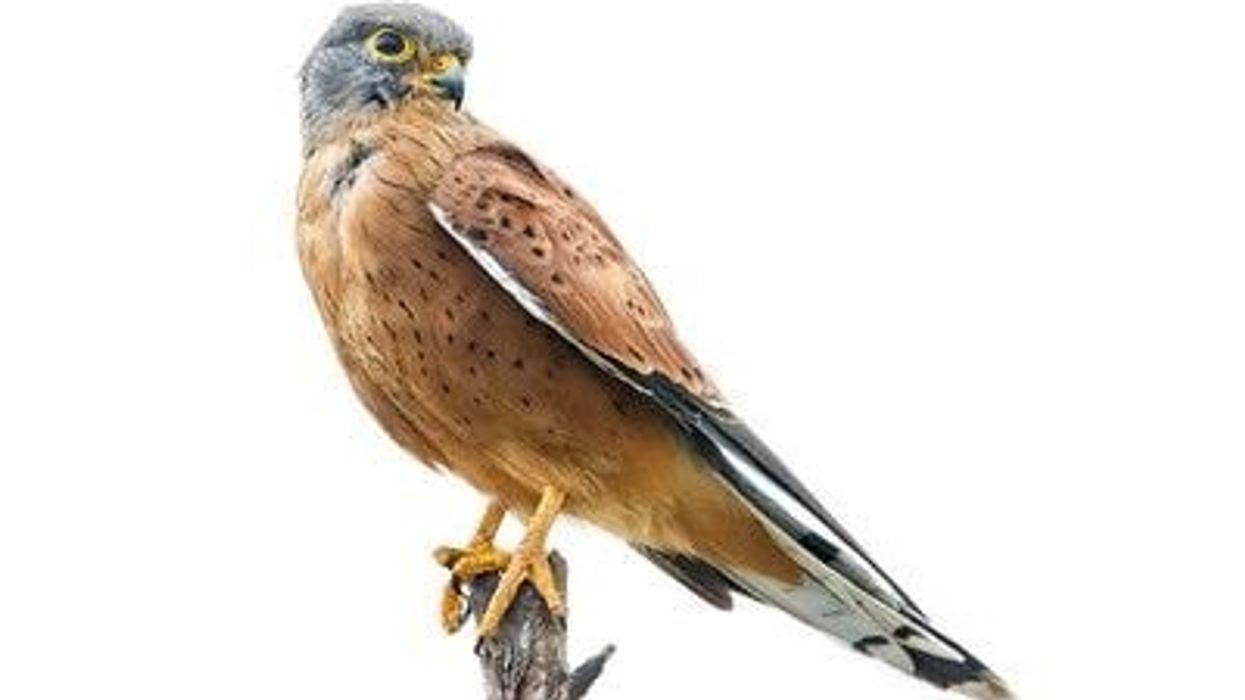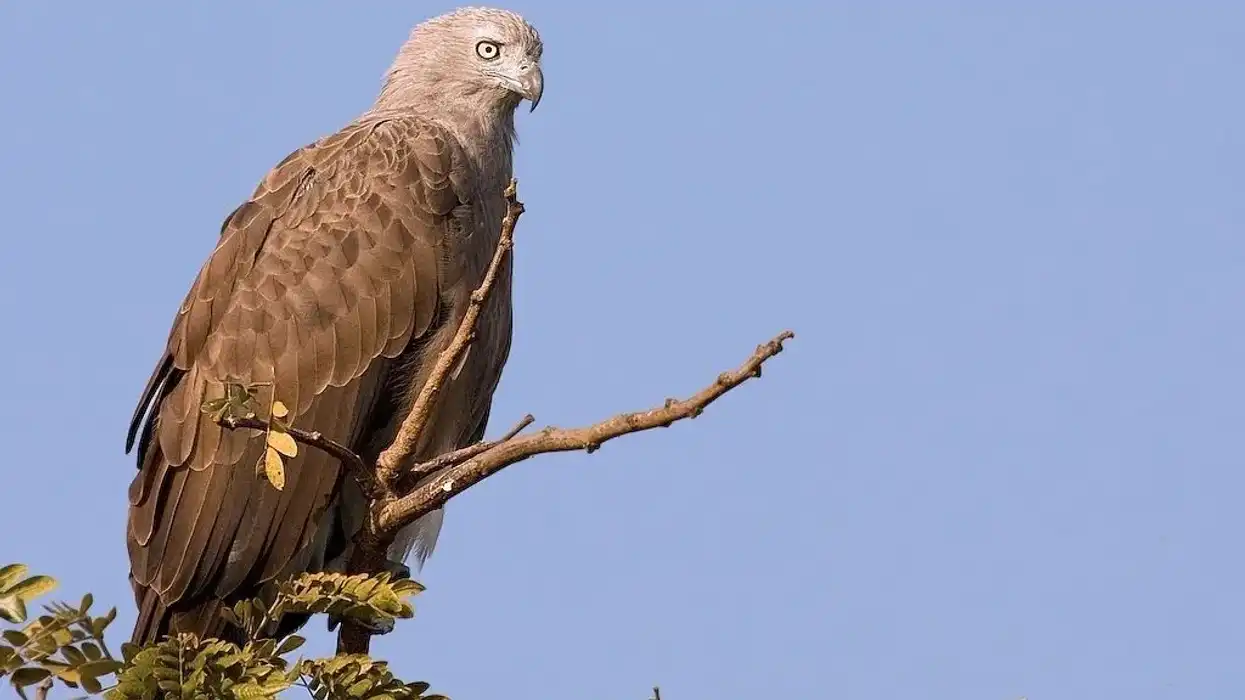Fun Common Kestrel Facts For Kids

Content
- What type of animal is a common kestrel?
- What class of animal does a common kestrel belong to?
- How many common kestrels are there in the world?
- Where does a common kestrel live?
- What is a common kestrel's habitat?
- Who do common kestrels live with?
- How long does a common kestrel live?
- How do they reproduce?
- What is their conservation status?
- What do common kestrels look like?
- How cute are they?
- How do they communicate?
- How big is a common kestrel?
- How fast can a common kestrel fly?
- How much does a common kestrel weigh?
- What are the male and female names of the species?
- What would you call a baby common kestrel?
- What do they eat?
- Are they aggressive?
- Would they make a good pet?
- Did you know...
- What are kestrels known for?
- How far can kestrels see?
Are you interested in knowing about majestic birds? If yes, then you should definitely know about the common kestrel (Falco tinnunculus), a member of the birds of prey species.
The bird can easily be identified by its plumage, containing the mixed colors of light chestnut brown with black. The bird tends to have brown streaks on the underside, and it is of a lighter color, along with a black-tipped tail.
Female common kestrels are larger and heavier in size compared to male birds. One of the fascinating aspects of this bird is its vision and ability to see ultraviolet light.
As preying birds, they are known for their sharp hunting capabilities. The common kestrel bird makes a short and steep dive to catch its prey from a distance after keen observation.
The bird is found in different parts of Europe, Asia, and Africa. According to the International Union for Conservation of Nature (IUCN) Red List, the current population status of this species is of Least Concern.
Want to know more interesting common kestrels? Keep on reading to learn about them. Also, check out the articles on the wandering albatross and Andean condor to learn more about other birds.
Common Kestrel Interesting Facts
What type of animal is a common kestrel?
The common kestrel (Falco tinnunculus) is a bird belonging to the kestrel group.
What class of animal does a common kestrel belong to?
The common kestrel (Falco tinnunculus) belongs to the class Aves, and to the Falconidae family, making it a falcon.
How many common kestrels are there in the world?
According to the International Union for Conservation of Nature (IUCN) Red List, the approximate population of adult common kestrels is around 4,000,000-6,500,000 individuals. The organization also goes on to say that about 19% of the birds' total population is contained in Europe.
Other sources state that the common kestrel bird population in Germany is about 41,500-68,000 mating pairs. The population in France is around 72,000-101,000 mating pairs, which is one of the highest populations for the common kestrels found anywhere else.
Where does a common kestrel live?
The common kestrel (Falco tinnunculus) is found in different parts of Europe, Africa, and Asia. Some of the birds have even been spotted in North America, even though it is a rare occurrence. The European kestrel is migratory, and during the winter months, the bird species travel to southern Europe or sub-Saharan Africa to escape the cold.
What is a common kestrel's habitat?
The common kestrel species is known for its diverse habitat that might be in places like open forests, tundra, shrubland, marshland, taiga, grassland, fields, heaths, and near human settlements. The birds do prefer open areas as it provides better access to hunt and catch small prey.
The birds can inhabit areas with an elevation of up to 16,404 ft (5000 m).
Who do common kestrels live with?
Common kestrels are mostly solitary birds, which are usually spotted while hunting. The adult females and males come together only during the breeding season. Though the bird has the ability to adapt to human environments, it stays away from humans.
How long does a common kestrel live?
On average, the common kestrel bird lives for 15-16 years in the wild. One bird was able to live to be 24 years old. The young birds have a high mortality rate, and only 66% of the birds survive to be of two years to partake in the next breeding season.
How do they reproduce?
Common kestrels breed once every year. The population that resides in the Northern Hemisphere usually mates between the months of April and May. The Falco tinnunculus gets more vocal during the breeding season.
Both, the adult male and the adult females, are known for making the 'quirrr-rr quirrr-rr' sound during the breeding season. The birds even perform a shivering flight as the courtship of mating. The nest is mainly seen in buildings or on trees.
An interesting thing about common kestrels is that the bird repurposes the nest of other birds rather than building its own nest. The bird also borrows the nests from that of crows. Once the females are ready to lay eggs, they turn mostly sedentary.
In the common kestrel nest, you will find three to seven eggs in a clutch, and the eggs have a bluish tinge with red splotches. The eggs take around 26-34 days to hatch, and it takes around seven to eight weeks for the young to fledge.
The young lives with its parents till it has enough hunting skills to survive in the wild. Common kestrels do reach sexual maturity in the first year after their birth, but seldom do they mate in the first year, instead of waiting for the next breeding season.
Even though the female kestrels are the only ones who incubate the eggs, the males also take care of the young, and it especially helps by hunting for food.
The chicks grow very quickly and need a constant source of food. Common kestrels can also be monogamous in nature.
What is their conservation status?
In the International Union for Conservation of Nature (IUCN) Red List, the common kestrels are currently listed as Least Concern.
Common Kestrel Fun Facts
What do common kestrels look like?
When it comes to the birds of prey species, the common kestrels (Falco tinnunculus) are thought to be one of the smallest among the group. The common kestrel females tend to be a little larger in size.
The plumage of the species is known for being light brown with black spots. However, the color can range anywhere from gray to brown. The backside of the bird has darker feathers, while the underside has lighter color.
There are narrow blackish streaks on the underside of the bird. The male common kestrels may also have a bluish-gray head, and the color may also reflect on its tail.
You may even notice a more reddish-brown appearance in the common kestrel females, but the color isn't present on the tail. The narrow blackish streaks or black spots are also present under its eye.
Its majestic wings are darker on top while it has a pale color on its underside, and the tip of the wings is usually black. Common kestrels have yellow bills and feet, along with yellow rims around their eyes.
The young chicks look distinctly different from the adult common kestrels, as it is covered with a light brown or white down. The feather molts into becoming more adult-like as it grows up.
In fact, the juvenile birds look strikingly similar to the female birds. By looking at these common characteristics, you can easily identify a kestrel, if you see one flying close to your home.
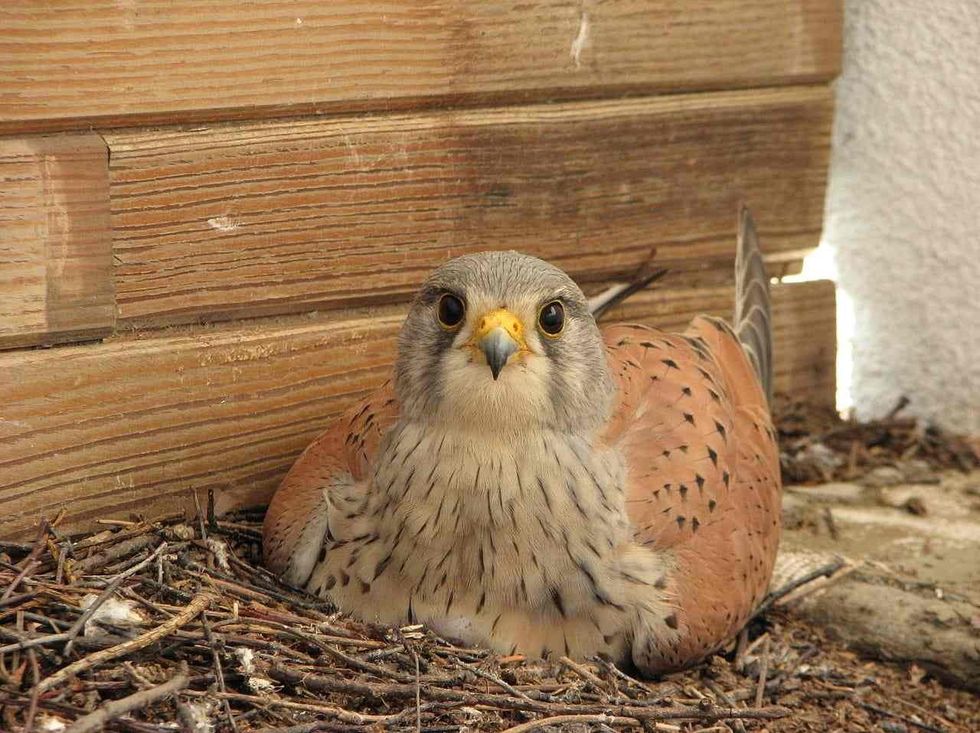
How cute are they?
Rather than being cute, the common kestrels are majestic with their long wings and tail, giving them the opportunity to have an elegant flight while catching their prey. However, the smaller size of the common kestrels does make it much less intimidating compared to other birds of prey.
How do they communicate?
Common kestrel (Falco tinnunculus) species mainly communicate through vocal calls, which are mostly limited to the mating season. However, a 'kee-kee-kee' call is often heard from the birds on sensing any threat to the young birds.
Tactile communication is also used by the bird, especially during the mating season. The male and the female birds perform a unique visual display as courtship.
It includes beating the wings in a quick but shallow way. The birds partake in the display either before or after mating. A rocking motion is also performed by the birds during this ritual.
The most striking part of this ritual is when the pair takes a sudden dive towards the nest, forming a V shape. A call with the sound of 'quirrr-rr' is made by the birds while they are part of this ritual.
How big is a common kestrel?
The average length of the common kestrel is about 13–15 in (32-39 cm). The common kestrel female is slightly larger than the males.
The average wingspan of the birds is 27.5-31.5 in (70-80 cm). Common kestrels are similar in size or slightly smaller than the common buzzard, which grows to an average length of 15-23 in (40 – 58 cm). It is also two times smaller than the northern goshawk that grows to a size of 21.6-24 in (55–61 cm).
How fast can a common kestrel fly?
The fastest speed seen in the common kestrel is 39 mph (63 kph), and the bird manages to achieve the speed through its huge wingspan. It can also remain in flight mode for a long distance.
How much does a common kestrel weigh?
The average weight of the common kestrel is around 4.8–11.1 oz (136-314 g). The female common kestrels are known for being heavier than the males.
What are the male and female names of the species?
The male common kestrel is called a tercel, while the female common kestrel is called a falcon or just a kestrel.
What would you call a baby common kestrel?
The baby common kestrel is known as a chick.
What do they eat?
The common kestrels prey on small mammals and other animals like mice, rodents, voles, and shrews. Its food can also include small birds, arthropods, frogs, and amphibians.
Common kestrels fly to a height of 32-65 ft (10-20 m) above their small prey animals and use a short steep dive to turn them into food. Instead of small mammals, the common kestrel may, at times, feed on beetles and grasshoppers.
When prey is abundant, the Falco tinnunculus species may even hoard food for times of need. Sometimes, the birds eat up between four and eight voles in a day.
Only 30-40% of the young birds survive its first year because of acute starvation, and it is often dependent on its parents for a long time. The northern population of common kestrels often feeds the young with lizards and other amphibians.
Are they aggressive?
Birds of prey are usually known for being territorial and aggressive when they feel threatened. Even though some people have trained common kestrels successfully, it is always better to stay away from them.
The birds are also known for having territorial displays throughout the year. The talons of all birds of prey are sharp, and they can easily leave a deep wound on human skin.
Would they make a good pet?
Not really. You shouldn't even think about turning the Falco tinnunculus into pets. These are wild birds, that are known for keen preying instincts. The species also has a habit of high altitude flight, so these animals shouldn't be kept in cages or even at your home.
Did you know...
The name kestrel comes from the Frech word crécerelle, which is used to denote a bell carried by Leprosy patients. Its name has been used since the 15th century. Before that, the common kestrels were also known as windhovers because of their nature of hovering.
The common kestrel, in Britain, is known as the most widely found member of the birds of prey species.
The common kestrel is also known by the name of European kestrel, Eurasian kestrel, and Old World kestrel.
Common kestrels have gone extinct in Shetland, and it was mainly studied by the absence of voles present in the area.
Ken Loach's film Kes, tells a story of a boy who manages to befriend a common kestrel. The 1969 film was an adaptation of the novel 'A Kestrel for a Knave' written by Barry Hines.
The common kestrels or the Old World kestrel was once the most commonly found bird of prey, but it has been overtaken by the common buzzard.
Though the common kestrel predators are negligible once the bird turns into adults, the young can be preyed on by different birds like Northern goshawks, sparrow hawks, peregrine falcons, eagle owls, and tawny owls. These birds are one of the main reasons for the low survival rates of the Eurasian kestrel.
Even though the population status of the kestrel is strong, it has faced a reduction due to the use of organochlorine and other pesticides for farming. Another reason for the population decline is the plummeting population of small mammals. Without a proper diet, the birds can neither sustain their energy, nor the population.
In Punjab, the common kestrel is known by the name of Larzānak, which stands for little hoverer.
What are kestrels known for?
Common kestrel images are a common symbol of power and vitality. The renowned poet, Gerard Manley Hopkins, mentioned a common kestrel in his poem The Windhover, describing its majestic flight.
In the past, the common kestrel was used to scare away pigeons. In Arabian countries, the kestrels were also used to train the greyhounds, that were used for hunting gazelles.
How far can kestrels see?
The extremely keen eyesight of common kestrels allows them to see prey that is almost 164 ft (50 m) away.
Its keen eyesight also includes the ability to detect ultraviolet light, allowing it to see even in darkness. An interesting hunting technique of common kestrels is through the detection of urine trails of rodents.
The keen vision of the common kestrels helps it to prey from a distance without the prey knowing about its presence, and the bird makes a short steep dive into making it as quick as possible.
Here at Kidadl, we have carefully created lots of interesting family-friendly animal facts for everyone to discover! Learn more about some other birds including the least tern and guinea fowl.
You can even occupy yourself at home by coloring in one of our free printable Common Kestrel coloring pages.
We Want Your Photos!
More for You
See All
Bachelor of Arts specializing in Journalism and Mass Communication, Postgraduate Diploma in Sports Management

Moumita DuttaBachelor of Arts specializing in Journalism and Mass Communication, Postgraduate Diploma in Sports Management
A content writer and editor with a passion for sports, Moumita has honed her skills in producing compelling match reports and stories about sporting heroes. She holds a degree in Journalism and Mass Communication from the Indian Institute of Social Welfare and Business Management, Calcutta University, alongside a postgraduate diploma in Sports Management.
Bachelor of Arts specializing in Economics

Gowri RaoBachelor of Arts specializing in Economics
With a bachelor's degree in Economics from Krea University, Gowri is a highly skilled data analyst and an expert in regression and causation modeling. Her interests in economic trends, finance, and investment research complement her professional expertise. In addition to her professional pursuits, Gowri enjoys swimming, running, and playing the drums, and she is also a talented tutor.
Disclaimer
1) Kidadl is independent and to make our service free to you the reader we are supported by advertising. We hope you love our recommendations for products and services! What we suggest is selected independently by the Kidadl team. If you purchase using the Buy Now button we may earn a small commission. This does not influence our choices. Prices are correct and items are available at the time the article was published but we cannot guarantee that on the time of reading. Please note that Kidadl is a participant in the Amazon Services LLC Associates Program, an affiliate advertising program designed to provide a means for sites to earn advertising fees by advertising and linking to Amazon. We also link to other websites, but are not responsible for their content.
2) At Kidadl, we strive to recommend the very best activities and events. We will always aim to give you accurate information at the date of publication - however, information does change, so it’s important you do your own research, double-check and make the decision that is right for your family. We recognise that not all activities and ideas are appropriate for all children and families or in all circumstances. Our recommended activities are based on age but these are a guide. We recommend that these ideas are used as inspiration, that ideas are undertaken with appropriate adult supervision, and that each adult uses their own discretion and knowledge of their children to consider the safety and suitability. Kidadl cannot accept liability for the execution of these ideas, and parental supervision is advised at all times, as safety is paramount. Anyone using the information provided by Kidadl does so at their own risk and we can not accept liability if things go wrong.
3) Because we are an educational resource, we have quotes and facts about a range of historical and modern figures. We do not endorse the actions of or rhetoric of all the people included in these collections, but we think they are important for growing minds to learn about under the guidance of parents or guardians.
